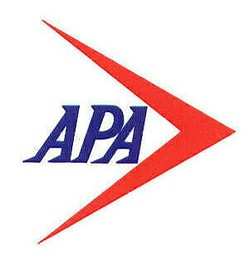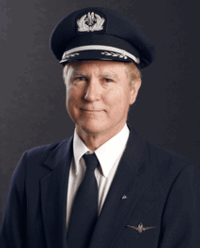Sat, Aug 06, 2011
Praises TSA For 'Known Crewmember' Program
The union representing pilots for American Airlines is calling
for the federal government to proceed with the issuance of new
flight- and duty time rules for commercial pilots without any
further delay. "Congress mandated an August 1, 2011 deadline for
the issuance of long-needed revisions to regulations governing
airline pilot flight- and duty-time and minimum rest
requirements,” said Allied Pilots Association (APA) President
Captain David Bates. “To help ensure the safety of the
traveling public, these revised regulations must be issued now
without further delay. It’s unconscionable to permit special
interests to delay the implementation of science-based,
standardized flight- and duty-time regulations.”

APA representatives and a broad range of other industry
stakeholders participated in the lengthy rulemaking process to
develop the new regulations. According to various news reports, the
White House Office of Management and Budget (OMB) has delayed
issuing the new regulations in response to objections expressed by
Part 121 Supplemental carriers, which include on-demand cargo
airlines.
Bates noted that the U.S. National Transportation Safety Board
has identified the need to address human fatigue in flight
operations as one of its “most wanted” safety
improvements for more than 20 years.
The union is also praising the TSA for the implementation of the
“Known Crewmember” program, which will streamline the
security screening process for U.S. commercial pilots.

"We are gratified to see it come to fruition,” said Bates
(pictured). “The introduction of full-body scanners last year
was the catalyst for our pilots to say ‘enough is
enough.’ We knew there had to be a better way to address the
issue of security screening for our pilots, who were adamantly
opposed to the additional radiation exposure they would receive via
the scanners.”
APA and the Coalition of Airline Pilots Associations (CAPA)
responded by pressing for a more common-sense approach. APA
persuaded American Airlines senior management to get involved,
which resulted in American Airlines Corporate Security writing the
programming code for Known Crewmember. American Airlines then
provided the Air Transport Association (ATA) with the code for
implementation and support. ATA is hosting the servers that will
query airline databases when TSA Transportation Security Officers
process pilots for entrance to the Security Identification Display
Area. The TSA will continue conducting random searches to help
ensure the new system’s integrity.
“Known Crewmember’s rapid implementation is a
testament to what can be accomplished when government, industry and
labor work cooperatively,” Bates said. “On behalf of
the APA leadership, I want to thank TSA Administrator Pistole for
his commitment to pursuing common-sense solutions to crewmember
security concerns.
More News
Aero Linx: American Aviation Historical Society AAHS is dedicated to the preservation and dissemination of the rich heritage of American aviation. Our purpose is to collect, preser>[...]
CrewMember (UAS) A person assigned to perform an operational duty. A UAS crewmember includes the remote pilot in command, the person manipulating the controls, and visual observers>[...]
Immediately After The Right Main Tire Contacted The Runway Surface, The Right Main Landing Gear Failed On October 31, 2025, at about 1227 Pacific daylight time, a Maule M-7-235A, N>[...]
Also: IAE Acquires Diamond Trainers, Army Drones, FedEx Pilots Warning, DA62 MPP To Dresden Tech Uni The danger to the flight training industry and our future pilots is clear. Dona>[...]
"On December 3, 2025, at approximately 10:45 a.m., a Thunderbird pilot ejected safely from a F-16C Fighting Falcon aircraft during a training mission over controlled airspace in Ca>[...]
 ANN's Daily Aero-Linx (12.03.25)
ANN's Daily Aero-Linx (12.03.25) ANN's Daily Aero-Term (12.03.25): CrewMember (UAS)
ANN's Daily Aero-Term (12.03.25): CrewMember (UAS) NTSB Prelim: Maule M-7-235A
NTSB Prelim: Maule M-7-235A Airborne-Flight Training 12.04.25: Ldg Fee Danger, Av Mental Health, PC-7 MKX
Airborne-Flight Training 12.04.25: Ldg Fee Danger, Av Mental Health, PC-7 MKX Aero-News: Quote of the Day (12.04.25)
Aero-News: Quote of the Day (12.04.25)




